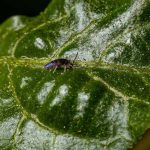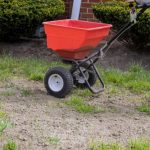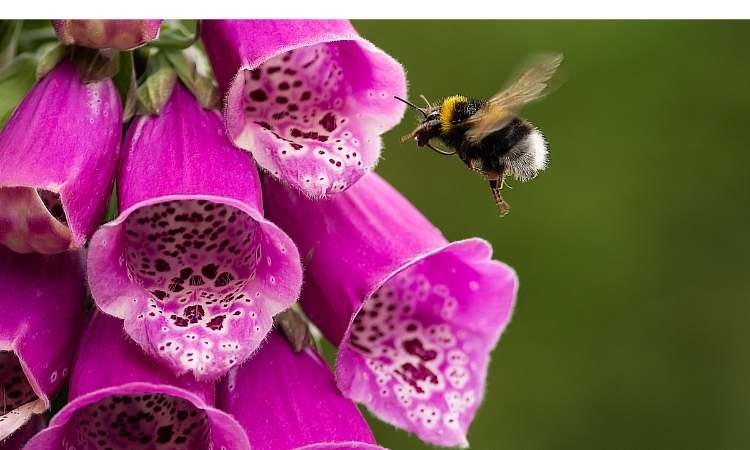Butterflies look great to see, but they may be a problem for a gardener when they infest your beloved vegetable garden.
I am not saying, just hate it. But people are always trying to find a way To Get Rid of White Butterflies In The Garden due to their feeding destruction.
So, to keep in mind that, to get rid of white butterflies in the garden, you can use natural deterrents like companion planting (marigolds, eggplants. rhubarb) and physical barriers. Again, you should make an environment where the birds can easily enter and eat the caterpillars. Most often, blackbirds, sparrows, robins, bluebirds, chickadees, warblers, and orioles are effective in controlling white butterflies in the garden.
However, there are some other effective methods to control their population and prevent infestation. We will discuss this in this post in detail. So read on-
What Are White Butterflies and How Do They Harm The Garden?
White butterflies are small to medium-sized butterflies characterized by their predominantly white or yellow wings. They are known for their delicate and fluttering flight pattern, which sets them apart from other butterfly species.
Common examples of white butterflies include the Cabbage White butterfly and the Clouded Yellow butterfly, which exhibit these distinctive features.
Identifying features:
- Small to medium-sized butterflies with white or yellow wings.
- Delicate, fluttering flight pattern.
- Common species include the Cabbage White butterfly and the Clouded Yellow butterfly.
Habitat: White butterflies like to live in places like gardens, fields, and parks where there are lots of flowers for them to visit.
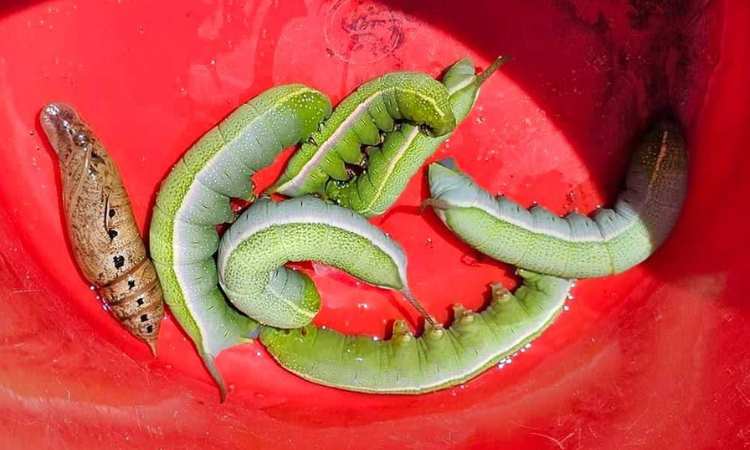
Eating habits: Grown-up white butterflies drink nectar from flowers, which helps the flowers grow. But when they’re babies, called caterpillars, they eat the leaves of certain plants.
Favorite plants: White butterflies really like to lay their eggs on plants like cabbage, and broccoli, and kale. They also use plants like mustard greens, cauliflower, and radishes for their babies’ food. So, these plants are like special homes for them.
Destruction Stage: ( Caterpillar stage ) The caterpillars feed on the leaves, leading to defoliation and weakening the plants
What are the Signs Of White Butterfly Infestation?
As like other insects, this type of butterfly also shows some identifying characteristics of plants. By using this indication, we can easily detect the problem and make our own solutions.
Here are some identifying characteristics of white butterfly infestation in the garden.
Holes in leaves:
You will see small, jagged-shaped holes in the leaves of your fresh plants. It often indicates the caterpillar’s presence in that garden.
Chewed edges:
White butterflies tend to nibble on the edges of leaves, creating a ragged appearance. If you notice irregular, frayed edges, it could be due to white butterfly activity.
Skeletonized leaves:
It means the stunned and unusually poor growth of the plants. Generally, cabbage worms are white butterfly larvae that eat the green tissue of leaves, leaving behind a transparent, skeletonized appearance.
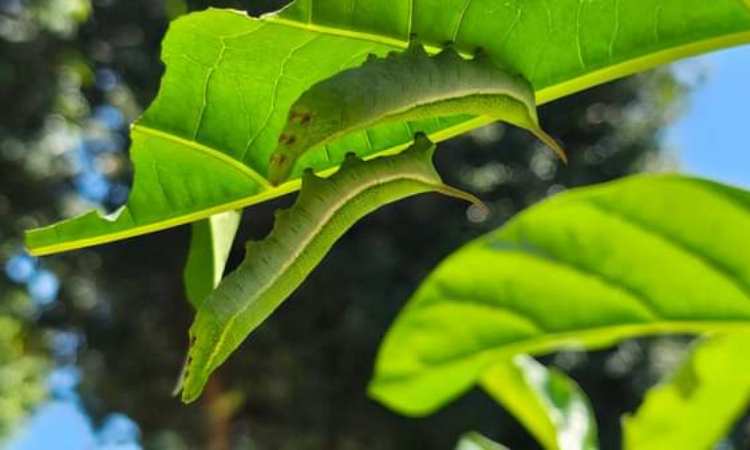
5 Ways How To Get Rid of White Butterflies In The Garden?
I have experienced several methods to cope with white butterflies in the garden. Yet in a research program in a University project, I have experienced their behavior and characteristic activity.
To get an idea about their lifecycle here are effective methods to get rid of them are-
1) Companion planting
It may seem just to plant and get rid of them. But practically it doesn’t make any sense.
You should plant within a boundary or area where the caterpillars are most dense. Different companion plants are highly effective against these creatures. Here are some of them-
Rhubarb leaves:
Generally, rhubarb leaves contain 0.5-1.0% oxalic acid, which is 570–1,900 milligrams of oxalate per 100 grams. The effect of oxalic acid on the caterpillar is acting as an abrasive on their mandibles (teeth) while they feed.
In a simple way, it causes damage to the mandibles, which can lead to reduced growth rates and increased mortality. Besides the excessive oxalate on the caterpillar will make a condition hyperoxaluria which also harms this pests.
So, scientifically it’s a good practice to use against white butterflies in your garden.
You can do it by yourself, take approximately 1 kilogram of roughly chopped rhubarb leaves and combine them with 20 grams of soft soap in 2.5 liters of water.
Allow this mixture to simmer for a duration of 30 to 45 minutes.
Afterward, strain the solution and let it cool before applying it as needed.
However, other companion plants that help you to eradicate the white flies from the garden are- Marigold,
- decoy plants,
- Celery,
- calendula,
- thyme.
- Nasturtiums
- Dill
- Sage,
- Rosemary,
- Hyssop,
- Mint, or
- Chamomile

2) Physical barriers and netting to protect plants
As the caterpillar size is about 25 mm long, it can be protected with a physical barrier manually implemented. You can cover the susceptible plants with netting or row covers physically.
That prevents white butterflies from laying eggs on the leaves. You must ensure that the netting or covers are well-secured to prevent any gaps.
In this case, to keep cabbage white butterflies and their caterpillars away from your plants, you can use a fine netting with a mesh size of 3-7mm.
But the 7mm mesh size is ideal for covering cabbages, sprouts, cauliflower, broccoli, and other brassicas.
Keep in mind that, netting should be kept away from the leaves so the butterflies don’t lay their eggs through it.
Regularly check for any tears or holes in the barrier and repair them promptly to maintain its effectiveness.
3) Handpicking white butterfly eggs and caterpillars
When you regularly visit the garden, if you see any indication that there are some caterpillars or eggs, from the initial stage you can handpick them by manual action.
To find the eggs and caterpillar inspect the undersides of leaves. If you find something similar like that remove and destroy them to prevent hatching.
Besides you need to wear gloves and pick off any visible caterpillars, placing them in a bucket of soapy water to eliminate them.
By this simple process, as removing eggs and caterpillars can help control the white butterfly population in your garden.
4) Spray
If you want to get rid of the bugs that bother your plants, you can make a special spray at home using simple ingredients.
You’ll need some liquid soap, like the kind you use for dishes and water. Here’s how to do it:
Soap Spray:
Mix 2 tablespoons of liquid soap made from vegetables with 1 gallon of water. Put this mixture in a spray bottle.
You can also use a type of soap called castile soap, which doesn’t have any extra scents or chemicals.
Just add 1 tablespoon of this soap to 1 liter of water and give it a good shake. But remember, for this spray to work, it has to touch the bugs directly.
Other Homemade Sprays:
There are more homemade sprays you can try to keep insects away from your plants:
Molasses Solution: Mix 1 tablespoon of molasses (it’s a kind of syrup), 1 teaspoon of dish soap, and a liter of warm water.
Garlic Solution: Crush three cloves of garlic, then add 1 tablespoon of vegetable oil, 1 teaspoon of dish soap, and a liter of water.
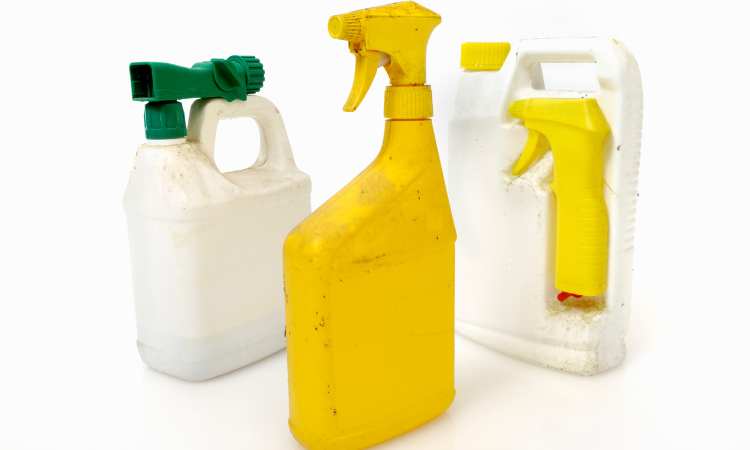
5) Organic Insecticides,
Many people like to use organic insecticides in their gardens to avoid chemicals. Here are some organic choices that can help keep white butterflies in check:
5.1) Bacillus thuringiensis (Bt):
Bt is a natural bacterium that helps keep white butterflies away from our gardens. It makes special toxins that target and stop white butterfly larvae.
The good thing is, Bt doesn’t hurt people, animals, or helpful insects.
To use it, mix 2 ounces with 3 gallons of water for a hand sprayer or 1 to 1-1/2 tablespoons per gallon of water.
5.2) Neem Oil:
Neem oil comes from the neem tree, and it’s another way to keep white butterflies at bay.
It messes up how these insects grow, so they can’t harm our plants.
To make neem oil spray, mix 2 to 4 tablespoons of neem oil with a gallon of water, or 1 tablespoon of neem oil and 1 tablespoon of castile soap in 1 liter of warm water, or 1 teaspoon of liquid soap in a gallon of warm water.
5.3) Spinosad:
Spinosad is made from a special bacteria found in soil.
It’s an effective organic insecticide that targets white butterflies by affecting their nervous systems, making them unable to move and eventually stopping them.
For longer-lasting effectiveness, you can add horticultural oil to the spray mix and use water with a pH of 6 to 8.
5.4) Dipel:
Dipel is a bacterial spray that’s great for controlling white cabbage butterflies.
It contains a stomach poison for caterpillars, including those pesky white butterflies.
- To use Dipel, mix 1/2 to 4 teaspoons with a gallon of water.
- Fill your spray tank with 1/2 to 3/4 of the desired water amount, add Dipel, and then add the remaining water.
- Use the spray within 12 hours of mixing, and apply it to the affected crops, especially the ones white butterflies like to munch on.
Read: How to Keep Iguanas Out of Your Vegetable Garden? ( Top 10 Proven Methods)
6) Synthetic Insecticides
While synthetic insecticides should be used as a last resort, they can provide effective control against white butterflies. Here are some commonly used synthetic insecticides and their effectiveness:
Pyrethroids:
These insecticides are highly effective in controlling white butterflies.
They work by disrupting the insect’s nervous system, leading to paralysis and death.
However, they can also harm beneficial insects and pollinators, so use them with caution.
Here are some widely used Pyrethroids (brand name ):
- Safer Brand Insecticidal Soap & Pyrethrin Concentrate
- Evergreen Pyrethrum Concentrate
- Talstar P Insecticide
Carbaryl:
Carbaryl (Sevin)) is a broad-spectrum insecticide that targets various garden pests, including white butterflies.
It kills insects on contact and provides residual control for a certain period.
However, it also poses a risk to beneficial insects and should be used judiciously.

7) Natural Predators
Some bugs and animals help us by eating the white butterflies that can harm our gardens. These are the natural predators of white butterflies, and they can be super effective:
Parasitic Wasps:
These special wasps lay their eggs on or inside white butterfly caterpillars and eggs.
When the wasp babies hatch, they eat the caterpillars or eggs.
Did you know that some wasps, like Cotesia glomerata, can kill as many as 20 large white butterfly caterpillars?
Trichogramma, another helpful wasp, is the most widely released bug-eating hero in North America, going after the eggs of over 200 species of moths and butterflies.
Chickens:
Chickens are like little garden helpers. They love to eat bugs, including the ones that bother our gardens like beetles, cabbage worms, slugs, and caterpillars.
One chicken can gobble up hundreds of insects in a single day. So, when you let your chickens roam around your garden, they happily snack on these pests.
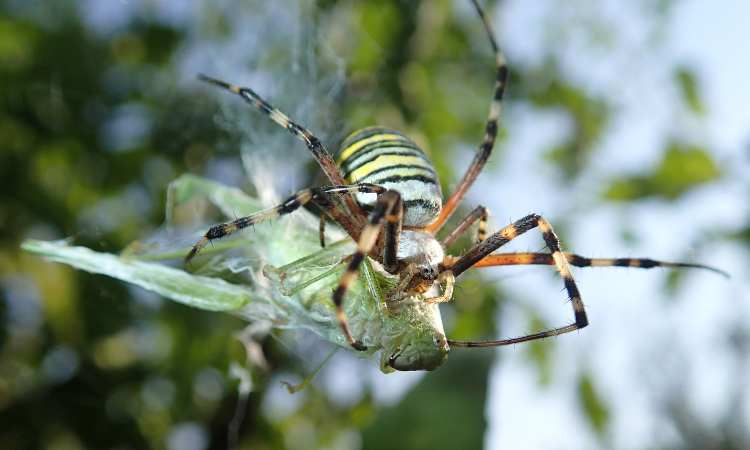
Songbirds:
Many types of birds like blackbirds, sparrows, robins, bluebirds, chickadees, warblers, and orioles enjoy munching on white butterflies.
These feathered friends are nature’s pest control squad. A single songbird can eat dozens of white butterflies, helping to keep your garden safe from these pests.
Ladybugs and Lacewings:
These friendly insects are natural enemies of white butterflies. They also eat other soft insects like aphids, spider mites, and mealybugs.
A single ladybug can devour up to 50 aphids a day. And lacewing larvae are super hungry, munching on pests like aphids, thrips, spider mites, mealybugs, and immature whiteflies.
These helpful bugs can be used indoors and outdoors to protect your plants.
Read: How to Get Rid of Ants in Garden Without Killing Plants? ( 14 Categorized Method)
Frequently Asked Questions
Can White Butterflies Harm Humans?
White butterflies are harmless to humans. While they are annoying in the garden, these butterflies do not pose any direct threats to human health.
Their primary focus is laying eggs on plants and feeding on nectar.
So, you can enjoy their beauty without worrying about any harm to yourself or your family.
Are There Any Plants That Repel White Butterflies Naturally?
Yes, there are several plants that can naturally repel white butterflies from your garden. Here are some examples:
- Marigolds: Planting marigolds around your garden can deter white butterflies due to their strong scent.
- Nasturtiums: This vibrant flower is known to repel white butterflies and other pests.
- Artemisia: The strong aroma of artemisia plants acts as a natural repellent for white butterflies.
- Garlic: The pungent aroma of garlic plants can deter white butterflies and many other pests.
How Long Does It Take For White Butterflies To Go Away?
The lifespan of white butterflies varies depending on the species and environmental conditions. But it is approximately 30 days. However, by adopting effective control measures, you can significantly reduce their presence in your garden. Here’s a timeline to give you an idea of how long it may take:
Immediate action: Implementing control methods such as physical barriers, handpicking caterpillars, or using organic sprays can yield immediate results in reducing white butterfly populations.
Weekly maintenance: Consistently applying control measures for a few weeks can help break the butterfly’s reproductive cycle, gradually reducing their numbers.
Seasonal control: Over the course of a gardening season, white butterfly populations can be managed effectively through continued vigilance and implementation of a combination of control methods.
Are White Butterflies Bad For Vegetable Garden?
White butterflies are not harmful to vegetable gardens. However, their caterpillars are.
The caterpillars of the cabbage white butterfly, for example, are voracious eaters of cabbage, cauliflower, and broccoli.
This is why gardeners often take steps to control these pests, such as using pesticides or netting to protect their plants.
What Is The Best Insecticide For White Butterfly?
The best insecticide for white butterflies is organic insecticides. But if you want to use synthetic insecticides then Sevin, Safer Brand Insecticidal Soap & Pyrethrin Concentrate, and Evergreen Pyrethrum Concentrate can be a good option with positive actions.
How Do I Get Rid Of White Moths In My Garden Naturally?
You can get rid of white moths in your garden naturally by using some simple methods.
First, you can try planting herbs and flowers like mint, marigolds, and lavender, as these can help keep moths away.
Next, encourage natural predators like birds and bats to visit your garden, as they love to eat moths. You can do this by putting up birdhouses or bat boxes.
Also, you can make homemade moth-repellent sprays using ingredients like garlic, neem oil, or vinegar mixed with water. Spray this mixture on your plants to deter moths.
Lastly, consider using row covers or fine mesh netting to physically block moths from laying their eggs on your plants.

What Are The Little White Butterflies Flying Around My Garden?
The small white butterflies you see in your garden are probably cabbage white butterflies. They’re really common in Europe and North America.
These butterflies are about 2 inches across and have white wings with black spots on them. They get their name because they like to lay their eggs on cabbage plants, and their caterpillar babies munch on cabbage leaves, which can be a problem for the plants.
But don’t worry, the adult butterflies themselves are harmless. In fact, they’re quite pretty and can make your garden feel more natural and lovely.
Conclusion
Thank you for reading. remember, the best way to get rid of white butterflies in your garden is to take preventive measures and be patient. If you can maintain all the ways mentioned previously hopefully you will get rid of the white butterflies in the garden totally.
Other Post:
- Are Springtails In Soil Good Or Bad? (Entom Viewpoint)
- What Does Fertilizer Do For Grass? ( Agronomist Viewpoint )
- How Long Does It Take For Lawn Fertilizer To Work?
- Is Topsoil Good For Plants? (Unearth the Secrets)
- Are Dead Leaves Good For Soil? (Informed Stat)
- How to Use Copper Sulphate in The Garden? (5 Practical Use)

I am a graduate of Bangladesh Agricultural University, where I delved into various agricultural disciplines, equipping me with a profound understanding of agriculture. Beyond academics, I have hands-on experience in gardening and crop cultivation. My passion is to embrace sustainable farming and horticulture. With a BSc in Agriculture, I am dedicated to promoting environmentally conscious and efficient agrarian practices.
Bachelor of Science (BSc) in Agriculture (Hons.)
Master of Science. (Sustainable Agriculture & Food Security ) (MS)
Bangladesh Agricultural University
